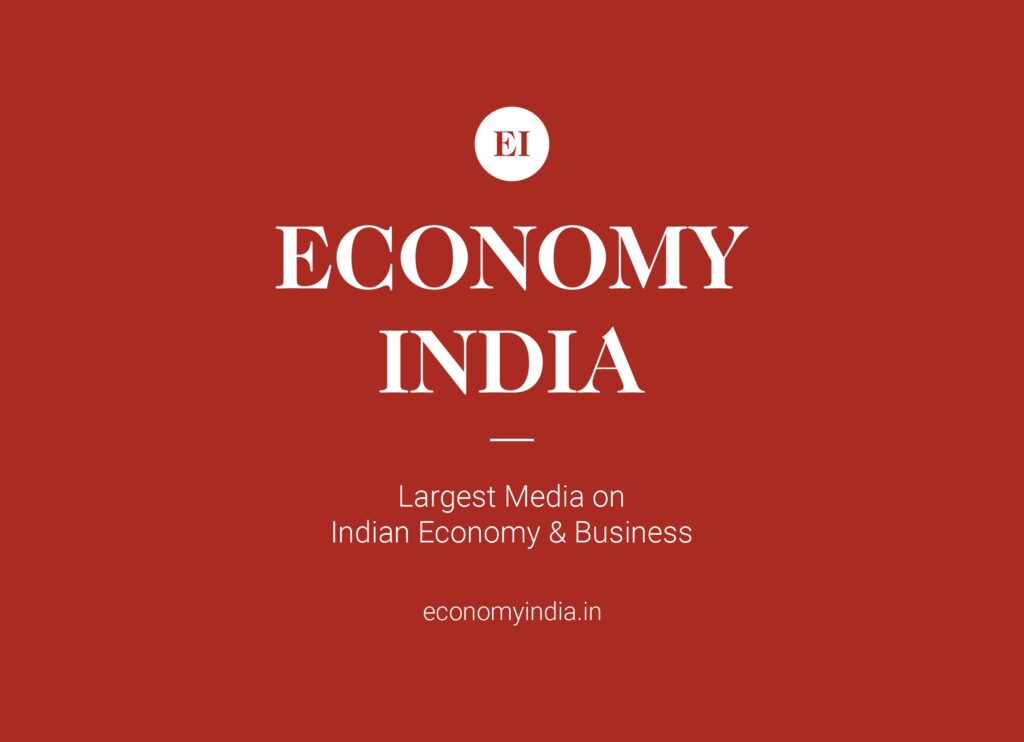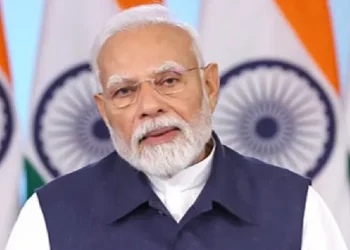India has demonstrated strong economic growth in FY23, overcoming the shocks of the COVID-19 pandemic, and has surpassed the UK to become the world’s fifth-largest economy.
NEW DELHI (Economy India): India’s Economic Outlook Robust Growth and has surpassed the UK to become the world’s fifth-largest economy.
The key drivers of GDP growth are strong domestic consumption and investment demand, coupled with sustained government capital expenditure.
Export Performance During April-June 2025, India’s exports totaled US$ 109.11 billion, with engineering goods (25.35%), petroleum products (18.33%), and electronic goods (7.73%) being the top three exported items.
“Narendra Modi stated, ‘Export performance during the pandemic played a crucial role in our economic recovery,’” noted Commerce Minister Piyush Goyal.
Future Capital Expenditure and Development Plans
Future government capital expenditure will benefit from tax prosperity, simplification of the tax system, tariff structure evaluation, and digitalization of tax filing. Increased capital expenditure on infrastructure and property development projects is expected to enhance growth multipliers in the medium term. The service sector’s pent-up demand is expected to drive further growth.
India’s Rapidly Growing Economy
India has emerged as the fastest-growing major economy globally and is expected to be among the top three economic powers within the next 10-15 years.
“India’s status as a strong and stable investment destination will bring significant benefits,” experts commented.
Unicorn Startups India is home to 113 unicorn startups with a combined valuation of over US$ 350 billion. Fourteen tech startups are anticipated to list in 2024.
Innovation: India aims to source 40% of its energy from non-fossil sources by 2030 and has set an ambitious target to achieve net-zero emissions by 2070 through its ‘Panchami’ strategy.
Employment Growth and Current Account Deficit
According to the McKinsey Global Institute, India will need 90 million non-agricultural jobs between 2023 and 2030 to boost productivity and economic growth. A 1.5% annual employment growth rate is required to achieve 8-8.5% GDP growth.
The current account deficit (CAD) decreased to US$ 23.2 billion, or 0.7% of GDP, in FY24, down from US$ 67.0 billion or 2.0% of GDP in the previous year.

Exports and Global Trade
Exports performed remarkably during the pandemic. Future fluctuations in textile exports are expected due to economic slowdowns among India’s trading partners.
“We expect Indian exports to reach US$ 1 trillion by 2030,” Piyush Goyal added.
Government Initiatives
The Indian government has implemented several initiatives to strengthen the economy. Key plans include:
- February 2024: Estimated total expenditure for FY2024-25 is ₹47,65,768 crore (US$ 571.64 billion), including capital expenditure of ₹11,11,111 crore (US$ 133.27 billion).
- January 22, 2024: Launch of the Prime Minister’s Surya Uday Yojana, providing rooftop solar installations for 10 million homes.
- September 17, 2023: Introduction of the PM-VISHWAKARMA scheme to recognize and support traditional artisans and craftsmen.
- August 6, 2023: Launch of the Amrit Bharat Station Scheme to transform and revitalize 1,309 railway stations.
- June 28, 2023: Presentation of the Draft Carbon Credit Trading Scheme, 2023.
- April 1, 2023: Inauguration of the Foreign Trade Policy 2023.
- January 1, 2023: Introduction of the Prime Minister’s Garib Kalyan Anna Yojana to provide free food grains to the underprivileged.
These initiatives reflect the government’s commitment to strengthening the Indian economy, boosting investment, and promoting growth.
| India’s Economic Outlook | Robust Growth and Future Prospects |
| Introduction | India has demonstrated strong economic growth in FY23, overcoming the shocks of the COVID-19 pandemic, and has surpassed the UK to become the world’s fifth-largest economy. |
| Strong Economic Growth in FY23 | India recorded significant economic growth in the first quarter of FY23. The nominal GDP for 2023-24 is projected to be ₹295.36 trillion (US$ 3.54 trillion), an increase from the revised estimate of ₹269.50 trillion (US$ 3.23 trillion) for FY22-23. The nominal GDP growth rate for FY24 is expected to be 9.6%, compared to 14.2% in FY23. “We have achieved substantial economic growth as we recover from the pandemic,” stated the Indian Ministry of Finance. |
| Domestic Demand and Government Capital Expenditure | The key drivers of GDP growth are strong domestic consumption and investment demand, coupled with sustained government capital expenditure. Export Performance: During April-June 2025, India’s exports totaled US$ 109.11 billion, with engineering goods (25.35%), petroleum products (18.33%), and electronic goods (7.73%) being the top three exported items. “Export performance during the pandemic played a crucial role in our economic recovery,” noted Commerce Minister Piyush Goyal. |
| Future Capital Expenditure and Development Plans | Future government capital expenditure will benefit from tax prosperity, simplification of the tax system, tariff structure evaluation, and digitalization of tax filing. Increased capital expenditure on infrastructure and property development projects is expected to enhance growth multipliers in the medium term. The service sector’s pent-up demand is expected to drive further growth. |
| India’s Rapidly Growing Economy | India has emerged as the fastest-growing major economy globally and is expected to be among the top three economic powers within the next 10-15 years. “India’s status as a strong and stable investment destination will bring significant benefits,” experts commented. Unicorn Startups: India is home to 113 unicorn startups with a combined valuation of over US$ 350 billion. Fourteen tech startups are anticipated to list in 2024. Innovation: India aims to source 40% of its energy from non-fossil sources by 2030 and has set an ambitious target to achieve net-zero emissions by 2070 through its ‘Panchamrit’ strategy. |
| Employment Growth and Current Account Deficit | According to the McKinsey Global Institute, India will need 90 million non-agricultural jobs between 2023 and 2030 to boost productivity and economic growth. A 1.5% annual employment growth rate is required to achieve 8-8.5% GDP growth. The current account deficit (CAD) decreased to US$ 23.2 billion, or 0.7% of GDP, in FY24, down from US$ 67.0 billion or 2.0% of GDP in the previous year. |
| Exports and Global Trade | Exports performed remarkably during the pandemic. Future fluctuations in textile exports are expected due to economic slowdowns among India’s trading partners. “We expect Indian exports to reach US$ 1 trillion by 2030,” Piyush Goyal added. |
| Government Initiatives | The Indian government has implemented several initiatives to strengthen the economy. Key plans include: February 2024: Estimated total expenditure for FY2024-25 is ₹47,65,768 crore (US$ 571.64 billion), including capital expenditure of ₹11,11,111 crore (US$ 133.27 billion). January 22, 2024: Launch of the Prime Minister’s Surya Uday Yojana, providing rooftop solar installations for 10 million homes. September 17, 2023: Introduction of the PM-VISHWAKARMA scheme to recognize and support traditional artisans and craftsmen. August 6, 2023: Launch of the Amrit Bharat Station Scheme to transform and revitalize 1,309 railway stations. June 28, 2023: Presentation of the Draft Carbon Credit Trading Scheme, 2023. April 1, 2023: Inauguration of the Foreign Trade Policy 2023. January 1, 2023: Introduction of the Prime Minister’s Garib Kalyan Anna Yojana to provide free food grains to the underprivileged. These initiatives reflect the government’s commitment to strengthening the Indian economy, boosting investment, and promoting growth. |












